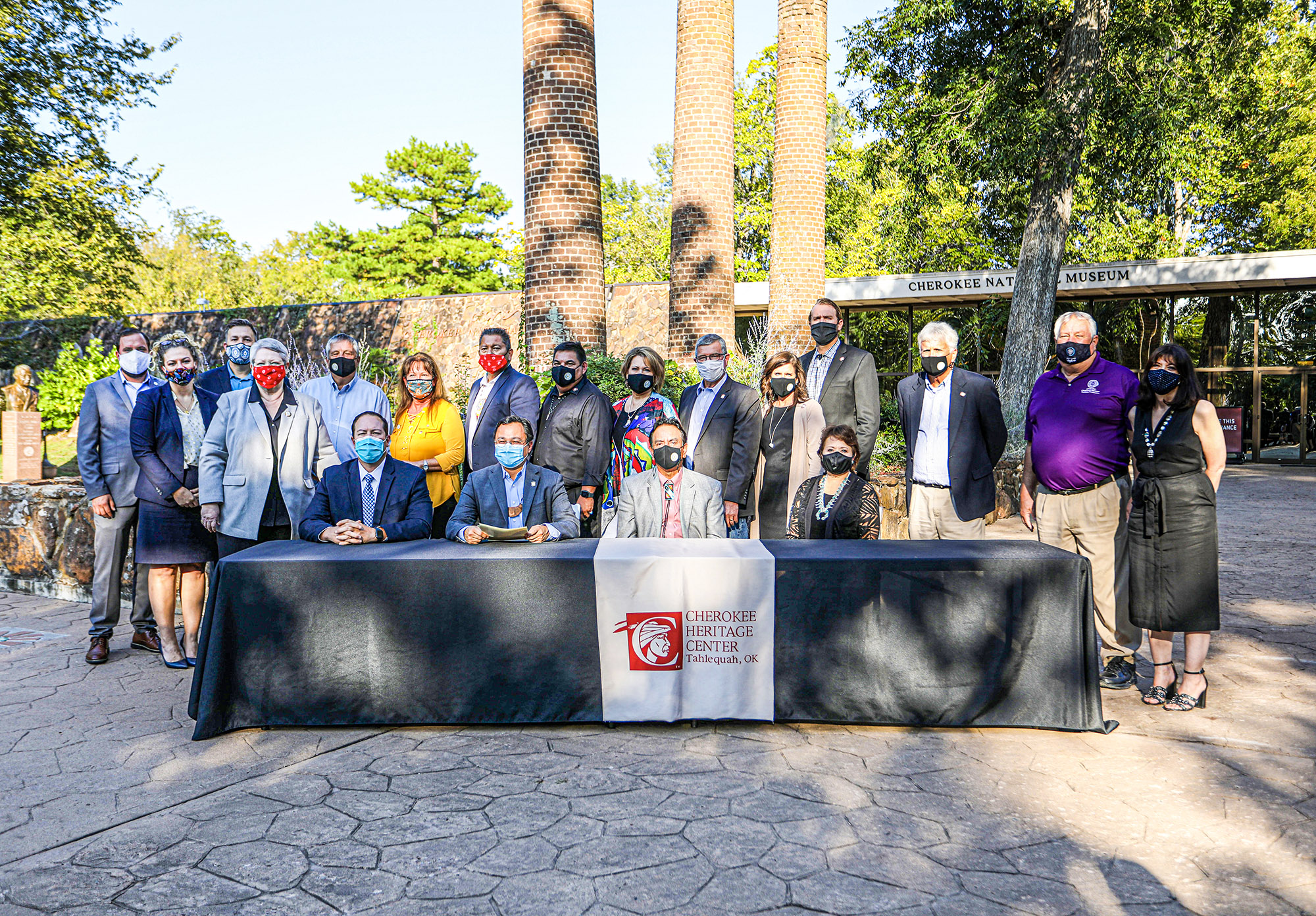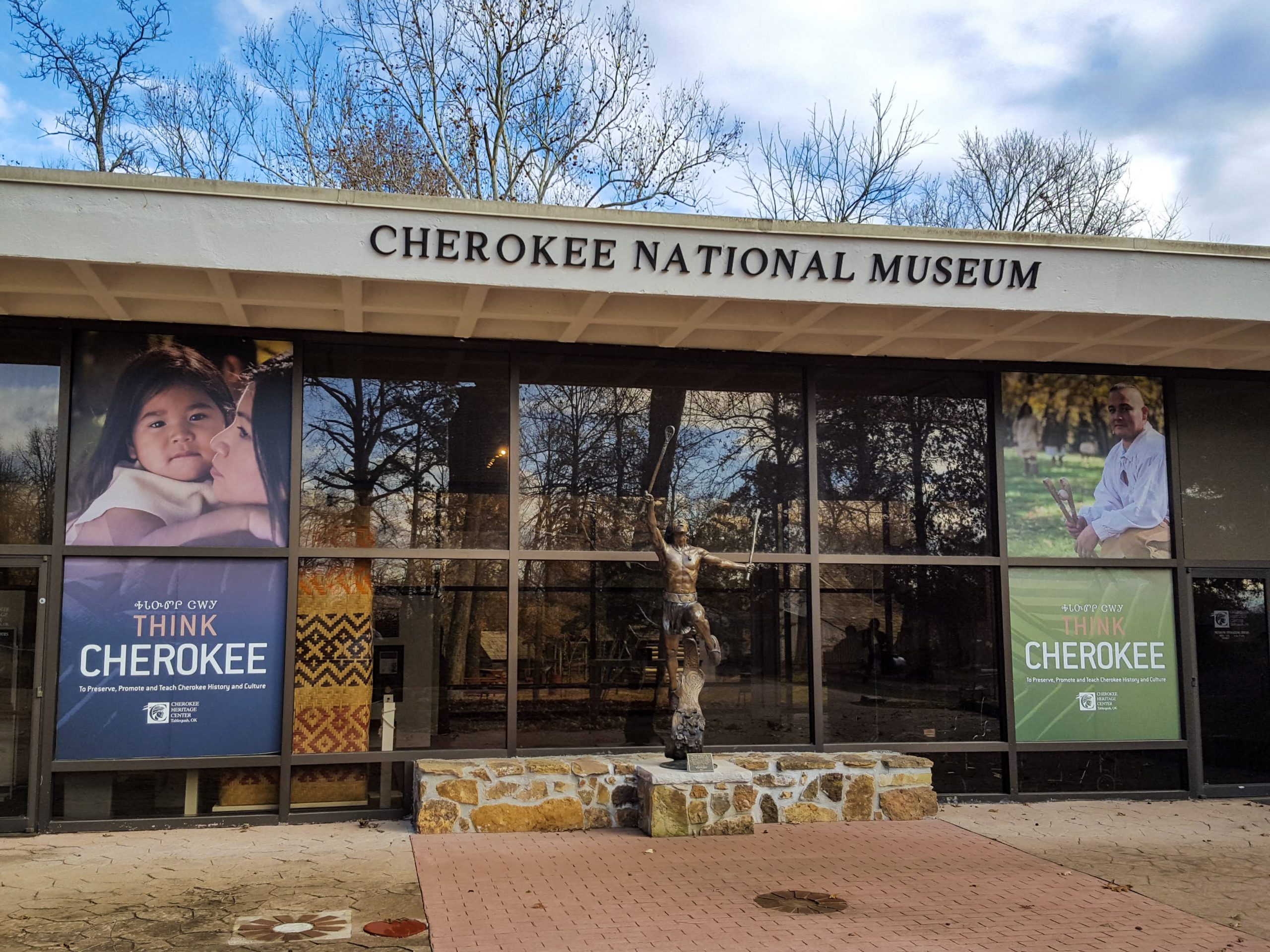Indianz.Com > News > Chuck Hoskin: Plan in place to improve and enhance Cherokee Heritage Center

Plan in place to improve and enhance Cherokee Heritage Center
Monday, October 5, 2020
Cherokee Nation
In 1963, a forward-thinking group of Cherokees and allies formed the Cherokee National Historical Society. Their vision was to create a space to protect the cultural assets and history of the Cherokee Nation. They began by opening a living Cherokee history site known as the Ancient Village in 1967, and they opened the current museum in 1974. Collectively known as the Cherokee Heritage Center, the attraction has entertained and educated visitors from across the globe for more than 50 years.
The Cherokee Heritage Center is located on the grounds of the former Cherokee National Female Seminary, and is home to the largest collection of Cherokee-specific historic tribal documents and cultural treasures from the 1700s through present day. It also houses a popular genealogy library.
On any given day, center visitors can explore their Cherokee heritage, attend a class, play traditional games, or learn about pre- and post-removal history, Cherokee agriculture, clan structure and the first bilingual Native newspaper. In this special place, the Cherokee story is told from the Cherokee perspective, using a variety of exhibits, technology and hands-on experiences.
Up to this point, the Cherokee Heritage Center has operated as an independent entity, under the direction of a board and the Cherokee National Historical Society. While it initially thrived, economic downturns and changes in public entertainment consumption across the decades have left the center at a crossroads. Cherokee Nation has always been a great partner to the heritage center, funding a substitutional amount of its operations over the past two decades. Between the tribal government and Cherokee Nation Businesses, we have contributed more than $20 million to the center over the past two decades.
However, because this site is critical to sharing our culture with the public and serving as a repository for so much of our history, we recently took a bold step to secure its long-term future.

Chuck Hoskin Jr. is the 18th elected Principal Chief of the Cherokee Nation, the largest Indian tribe in the United States. He is only the second elected Principal Chief of the Cherokee Nation from Vinita, the first being Thomas Buffington, who served from 1899-1903. Prior to being elected Principal Chief, Hoskin served as the tribe’s Secretary of State. He also formerly served as a member of the Council of the Cherokee Nation, representing District 11 for six years.
Search
Filed Under
Tags
More Headlines
Native America Calling: Is Native history patriotic enough for history class?
Native America Calling: Paying the price for 80 years of nuclear development
Native America Calling: The fight for Shinnecock Nation fishing rights
Source New Mexico: Funding for Navajo Nation water project in doubt
Colorado Newsline: Corporation for Public Broadcasting shutting down
Arizona Mirror: Former Navajo Nation president mounts another run for Congress
Cronkite News: Democrats look to take House from Republicans
DVIDS: Mescalero Apache Tribe welcomes military aid after flooding
NAFOA: 5 Things You Need to Know this Week (August 4, 2025)
Chuck Hoskin: Cherokee Nation writes new chapter in education
Native America Calling: Native educators grapple with burnout
Cronkite News: Farm offers horse therapy for adults and youth
Native America Calling: Indigenous economic opportunities and threats in the Arctic
Native America Calling: Bridging Indigenous cultures across the Arctic
Cronkite News: Speculation surrounds visit by Sen. Ruben Gallego (D-Arizona)
More Headlines
Native America Calling: Paying the price for 80 years of nuclear development
Native America Calling: The fight for Shinnecock Nation fishing rights
Source New Mexico: Funding for Navajo Nation water project in doubt
Colorado Newsline: Corporation for Public Broadcasting shutting down
Arizona Mirror: Former Navajo Nation president mounts another run for Congress
Cronkite News: Democrats look to take House from Republicans
DVIDS: Mescalero Apache Tribe welcomes military aid after flooding
NAFOA: 5 Things You Need to Know this Week (August 4, 2025)
Chuck Hoskin: Cherokee Nation writes new chapter in education
Native America Calling: Native educators grapple with burnout
Cronkite News: Farm offers horse therapy for adults and youth
Native America Calling: Indigenous economic opportunities and threats in the Arctic
Native America Calling: Bridging Indigenous cultures across the Arctic
Cronkite News: Speculation surrounds visit by Sen. Ruben Gallego (D-Arizona)
More Headlines